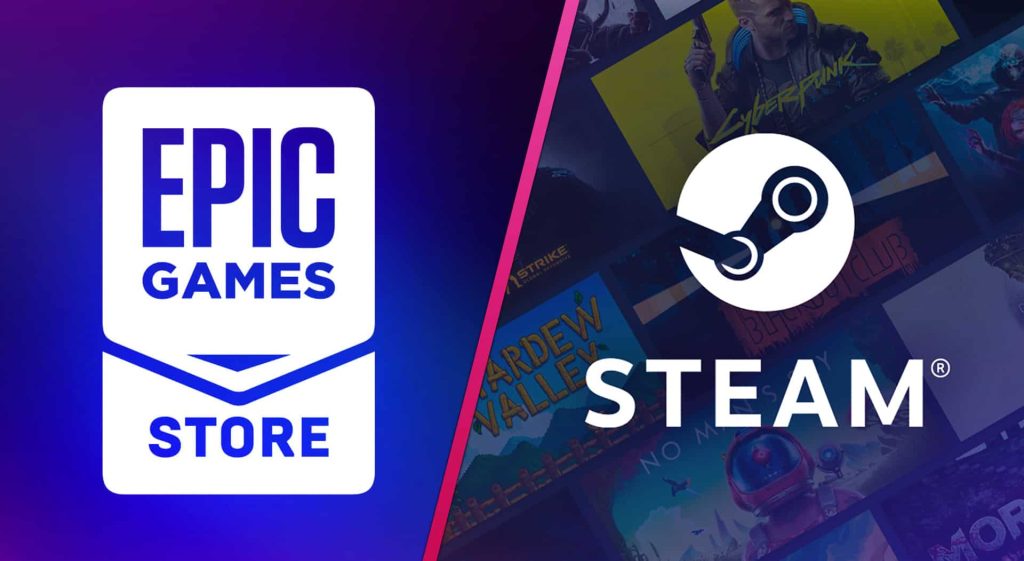Do you find yourself captivated by the world of video games, harboring a deep-seated dream of establishing your very own indie game company? If the thought of crafting immersive digital experiences ignites your enthusiasm, you’re in for a treat!
This comprehensive guide is your ticket to embarking on a thrilling journey towards building your indie game empire from the ground up.
Get ready to transform your creative aspirations into tangible reality as we unveil the steps to make your indie game company a resounding success.
Step 1: Define Your Vision and Goals
Embarking on the exciting journey of building your own indie game company? Begin by carefully outlining the game genres that ignite your passion and align with your creative vision.

Simultaneously, set well-defined goals that steer the trajectory of your company’s growth. These goals act as guiding lights, ensuring that your decisions remain focused and purposeful.
Whether you’re envisioning action-packed adventures, thought-provoking puzzles, or innovative gameplay, this dual approach sets the stage for your indie game company’s success. With a clear direction and a creative compass, you’re ready to embark on a thrilling quest in the realm of game development.
Step 2: Market Research and Target Audience
Step into the realm of market research, a vital stage on your path to creating an indie game company. Delve into understanding how the industry works, study your competition, and uncover what your potential players want.

This deep exploration reveals the patterns and likes that shape the gaming world. With this information, you can carefully shape your games to match what your audience loves, making experiences that grab their attention and keep them interested.
When your games align with what players want, you’re not only making games – you’re building bonds that will help your indie game company succeed.
Step 3: Create a Business Plan
Get started on your indie game journey by carefully creating a thorough business plan. In this plan, describe how your company will work, including everyone’s jobs and what they’re responsible for.

Also, show how much money you expect to spend and earn, so you can make good financial decisions.
This plan will be like a map, helping your company grow the right way. It’s like having a guide that shows you where to go and how to get there. From organizing your company to managing money, this business plan will lead you to success in your indie game adventure.
Step 4: Legal and Financial Matters
In the journey of establishing your indie game company, take the vital step of legally registering your business. Make sure your company is officially recognized by the law to operate. Additionally, acquire any licenses and permits that are required for your type of work.
These documents grant you the authorization to conduct your business activities within legal boundaries.
The alignment of legal and financial matters is pivotal for the smooth functioning of your indie game company. Having these aspects in order not only ensures compliance with regulations but also fosters trust among stakeholders. By taking these steps, you establish a solid foundation for the growth and success of your venture.
Step 5: Build a Talented Team
Assemble a skilled team of game developers, designers, artists, writers, and other necessary roles. Collaborative teamwork is key to creating outstanding games. A talented team introduces innovation and expertise into your indie game projects. Each team member’s specialization contributes to the game’s depth and complexity.

Collaborative brainstorming sessions lead to innovative mechanics, unique storytelling methods, and visually striking aesthetics. When you have individuals who excel in their fields working together, the result is a game that stands out in the competitive market.
Passion fuels the indie game industry, and a skilled team embodies this enthusiasm. Every member is driven by their love for games and the desire to create something extraordinary.
This passion translates into dedication – the willingness to go the extra mile to perfect every aspect of the game. With a team that’s genuinely invested in the project’s success, you’re more likely to overcome challenges and deliver a remarkable game.
Step 6: Game Development Tools and Software
Helping your team make great games efficiently means investing in the right tools. These tools are like the foundation of your creativity, making work easier and improving your games’ quality.
Picking the right tools means thinking about what your team needs and your project’s specifics. A strong coding environment (IDE) makes coding smoother. Artists can use 3D software to create stunning visuals, and animation tools make characters and things in games move naturally.
Using the right game engines can also really help. Big engines like Unity and Unreal Engine have many features, like making things look real and simulating physics. These engines give your team a solid base to build cool game worlds on.
Being efficient also needs good teamwork, and project management tools help with that. Tools like Trello, Asana, or JIRA help with organizing tasks and managing time, so everyone knows what’s going on.
In the end, the right tools help your team beat challenges, try new ideas, and use their creativity. By making things easier and helping teamwork, you make great games. As games change, keeping up with new tools and technology is important to stay in the game and make awesome experiences.
Step 7: Create a Prototype
Creating a prototype or demo of your game idea is a crucial step in the development process. This mini-version of your game allows you to test out different gameplay mechanics and get a feel for how your game will work. It’s like building a small-scale model before constructing the real thing.
Prototyping lets you see how the game elements come together and if they work smoothly. You can check if the controls are intuitive, if the graphics are appealing, and if the overall experience matches your vision. This early testing helps you catch any issues or improvements that need to be made, saving you time and effort in the long run.
Step 8: Secure Funding
Starting an Indie Game Company: A Vision and a Need for Funds
Embarking on the journey of creating your own indie game company is a thrilling endeavor, driven by your passion for gaming and a vision to bring unique experiences to players. However, while passion and creativity are vital, they can only take you so far. One of the most critical aspects of turning your dream into reality is securing proper funding.
Funding is the lifeblood of any business, and the gaming industry is no exception. Developing a video game, even a small indie title, requires resources for everything from software and hardware to talent acquisition and marketing. Let’s delve into why funding is so important for the success of your indie game company.
Step 9: Game Development
Begin full-scale development based on your prototype and the feedback received. Set milestones and deadlines to keep your team on track. After creating a prototype of your game and gathering valuable feedback from potential players, you’re now ready to dive into full-scale development.
This exciting phase is where your vision truly takes shape, and with proper planning, milestones, and deadlines, your indie game company can navigate this journey with confidence and success.
Step 10: Quality Assurance
As your game takes its final shape, there’s a crucial step that can make or break its success: thorough testing.
This phase goes beyond just playing the game; it’s about meticulously examining every nook and cranny to identify and eliminate any potential bugs, glitches, or performance hiccups. Your dedication to delivering a polished and enjoyable player experience is showcased through this rigorous process.
Step 11: Marketing and Promotion
Drive success for your indie game with strategic marketing. Craft a compelling brand story that resonates with your target audience. Utilize social media platforms to engage players through teasers, behind-the-scenes content, and updates. Collaborate with gaming influencers to extend your reach and credibility.

Optimize your website and app store listings with relevant keywords for improved discoverability. Leverage email marketing to keep your community informed about game releases and events. Consider hosting giveaways and contests to boost excitement. Collect and analyze player feedback for continuous improvement.
Embrace a data-driven approach to refine your strategies and allocate resources effectively. Stand out in the competitive gaming industry by mastering indie game marketing.
Step 12: Distribution and Platforms
Decide on the platforms where you’ll release your game. Prepare your game for submission and meet platform requirements. Maximize your indie game’s reach through strategic distribution and platform selection. Research and identify platforms that align with your target audience and game genre. Utilize digital storefronts like Steam, Epic Games Store, and itch.io to showcase and sell your game.
Leverage console platforms such as PlayStation, Xbox, and Nintendo Switch to tap into diverse player bases. Consider mobile platforms like iOS and Android for on-the-go gaming enthusiasts. Implement a cross-platform approach to ensure accessibility across devices.
Regularly update your game to maintain compatibility and fix bugs. By effectively navigating distribution and platforms, your indie game can achieve widespread visibility and success.
Step 13: Community Engagement
Build a community around your games by interacting with players and incorporating their feedback into your game updates. Foster a thriving player community for your indie game company. Establish communication channels like forums, Discord, and social media groups to connect players and developers.
Encourage discussions, share updates, and gather feedback to create a sense of ownership among players. Host developer Q&A sessions, live streams, and in-game events to enhance interaction. Acknowledge and implement player suggestions to strengthen their connection with your game. Recognize and celebrate dedicated players to build loyalty.
Regularly engage with the community through contests, giveaways, and exclusive content. By nurturing a vibrant community, your indie game can evolve with player desires, ensuring enduring success and a dedicated fan base.
Step 14: Continuous Learning and Growth
Stay updated on industry trends, new technologies, and player preferences. Continuously improve your games based on lessons learned from each project. Keep learning to help your indie game company grow.
Know what’s new in the game industry, technology, and what players like. Go to events, online talks, and classes to learn more and meet people. Tell your team to learn online and work together on projects. Look at other game makers to get ideas. Don’t worry if things go wrong sometimes – you can learn from mistakes.
Try new things and be ready to change. Check how your game is doing and listen to what players say. If you keep learning, your indie game company can make great games and do well in the gaming world.
Building an indie game company is an exciting journey that requires careful planning, teamwork, and dedication. By following these steps and staying committed to your vision, you can turn your dream of creating games into a thriving reality. Embrace challenges, celebrate successes, and always keep the player experience at the heart of your endeavors. Your indie game company’s success awaits!


